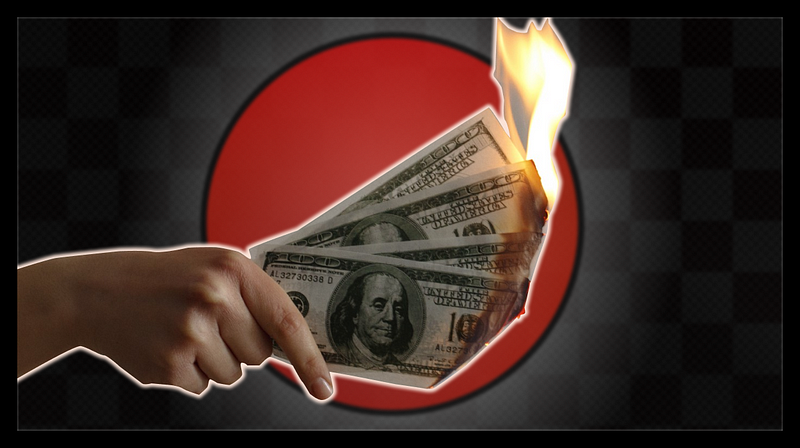How 5 Startups Failed Despite Raising More Than $500 Million
Jul 10, 2020
How 5 Startups Failed Despite Raising More Than $500 Million
Key lessons to help you avoid making the same mistakes

Your startup can still fail after hundreds of millions in funding. This may be a scary thought. But it is an important fact to reflect on to stop you from getting lost in the hype surrounding both you and your business.
Everyone is looking for the next big thing. Who wouldn’t want to jump on Amazon in 2000 and experience the ride of exponential growth? The adrenaline rush of billions can blind both investors and founders. But like they say, the faster they climb the harder the potential fall.
Studying how some startups made their millions or in some case billions is a good habit. Yet to avoid future headaches don’t underestimate the power of doing the opposite and taking the time to learn how others failed.
The graveyard of failed startups is overflowing. and you can learn from their mistakes. Below are five of the biggest that crashed and burned despite raising 500M dollars or more.
#5 Better Place — $675M
The founder Shai Agassi had a bold ambition to dominate the electric charging market. Short battery life had been the biggest obstacle that slowed down the mass adoption of electric cars. Increasing capacity seemed many years away. Agassi’s bright idea was to make it easy to swap dead batteries with fresh ones in under 3 minutes.
Ambition can be seriously attractive. But it can also be a massive weakness. They wanted their battery swapping stations to match the number of gas stations. Can you imagine the cost of this? It seems neither could Better Place. The upfront costs ran wild even in the relatively small test markets of Israel and Denmark. The revenue side was even worse as only one car, the Renault Fluence, was fitted with a removable battery. When stations were set up there weren’t enough drivers to keep them afloat.
The strategy could have been smart in the long with more support. Yet Tesla and other rivals invested in reducing charge times and increasing capacity. This rendered Better Place’s investment in infrastructure obsolete during testing.
The lesson:
When the network costs are high, you must be certain a better alternative model is many years away. As Peter Thiel says “It’s much better to be the last mover.”
#4 Jawbone — $929M
In 2019, the global wearables market was worth $32bn. In 2011, it seemed certain Jawbone would be a major market player. It had been around for a decade and with a solid history of innovation. The fitness wearable became tied to their future though. They said all the right things and focused on sleek fashionable trackers.
Yet Apple and Fitbit won the race and Jawbone has collapsed. The problems started early as their big launch the ‘Up’ had a fundamental flaw. It was a fitness tracker that short-circuited when the wearer sweated! This led to a massive product recall. They launched more products but the defects soaked up their income. They needed to raise more money to deal with this. They achieved it but the terms meant things got “really, really complicated” according to Hosain Rahman, the former CEO.
Jawbone became too good at raising money and not skilled enough at creating products. Their focus on style over substance lost to the innovative products of their competitors. They only had 2.8% of the market share in 2016.
The lesson:
Don’t focus so much on being stylish that you forget what your customers want.
#3 Arrivo — $1bn

When an idea sounds too good to be true, sometimes it is. Arrivo was designing an above ground hyperloop transportation. Yes, you read that right. If you’ve ever seen Futurama, you’ll know exactly what they were aiming for. Imagine people’s cars being blasted alongside highways at hundreds of miles an hour.
Arrivo’s problem was one of engineering. They never got a test track built nor did they prove the concept. Why did they even get funding? The answer lays in Brogan BamBrogan who was chief engineer at SpaceX. His remarkable resume meant people were willing to believe in his vision. They may have had the ability to create the hyperloop but it needed so much money to test and political buy-in. For a company of 30 people, it just ran out of resources.
Virgin Hyperloop One and Hyperloop Transportation Technologies, Arrivo’s competitors, have significantly more resources. Smaller competitors have the explicit backing of governments.
The lesson:
If you have an idea to change the world you need to have the resources and political backing to do it.
#2 Solyndra — $1.29bn
Few industries could have more potential upside than clean technology. The world has opened its eyes to the dangers of non-renewable energy and searches for replacements to an industry worth 3.8% of the world economy. Solyndra seemed like a great bet with its innovative solar panels. Supposedly, their cylindrical panels were best at converting energy.
Some believe their reputation was built on a web of lies. They are under investigation from the US government for using fake records to win a $535 million subsidy. What broke the company had nothing to do with this though. Silicon prices crashed and reduced the cost of building solar panels. Now Solyndra could be undercut because their resource needs were different and they weren’t so lucky.
Now the solar panel market is dominated by low-cost Chinese manufacturers. Solyndra’s technology wasn’t good enough to justify the high valuation in the long term.
The lesson:
Don’t lie to the government as it is only a matter of time before you’re found out. If Solyndra had maintained transparency, they may have been able to increase their costs slower and pivot their product if needed.
#1 LeSports — $1.7bn
And finally the largest failure on this list, the Hong Kong-based startup LeSports who planned to stream sport across China. Jia Yueting, the CEO, was able to raise money rapidly through connections from his existing businesses.
Their business model relied on winning exclusive rights to the biggest events. They succeeded at some level with Formula 1, English Premier League, and the NBA. Yet they had nothing to make them stand out except these rights. It didn’t take long for people to realize they didn’t have innovative technologies or game-changing distribution strategy.
LeSports had a classic case of the winner’s curse. They won these contracts by paying way more than their rivals were willing to fork out. Revenue from the rights was a small fraction of their costs. The Asian Football Confederation took aways LeSports rights when they failed to keep up payments and they never recovered.
The lesson:
Don’t spend more on something than your rivals if you have no other competitive advantage!
Recap
We’ve looked at 5 massive startup failures. If you’re looking at getting funding now, you must know the money doesn’t guarantee success. Don’t get complacent and focus on your fundamentals. It’s easy to get lost in all the hype or the excitement of raising money.
Focus on how much profits you can realistically generate instead of how much money you can potentially raise.

